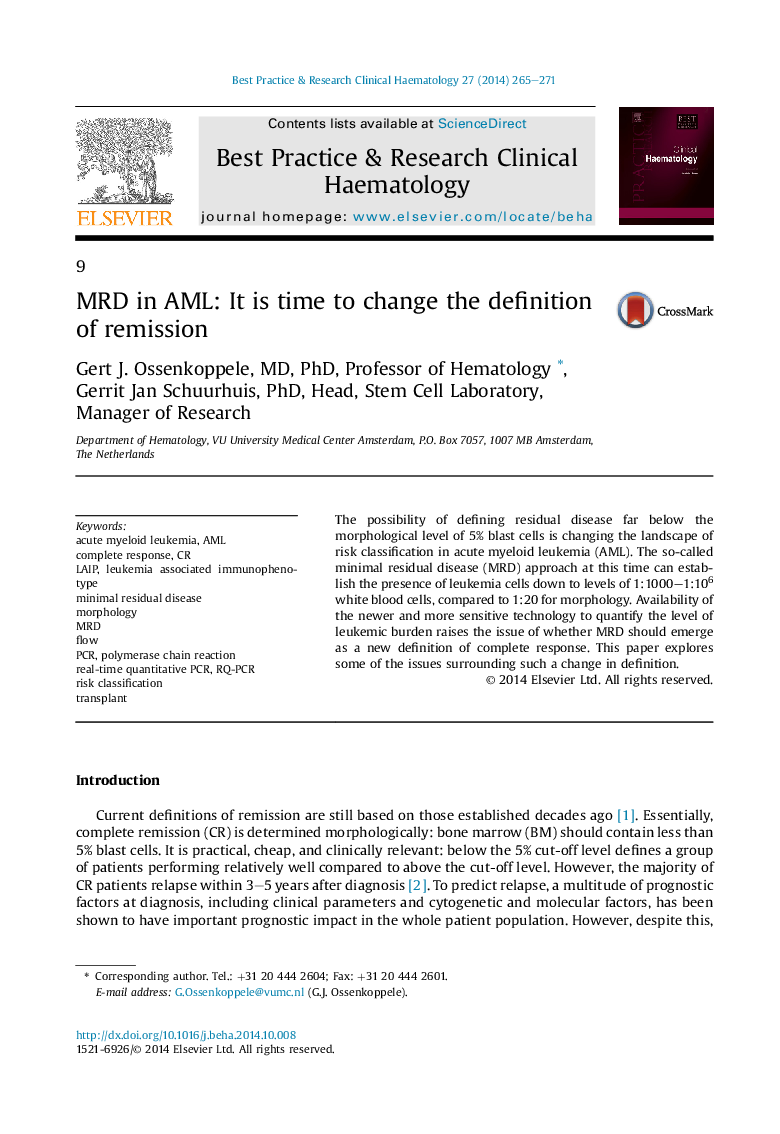| Article ID | Journal | Published Year | Pages | File Type |
|---|---|---|---|---|
| 2100146 | Best Practice & Research Clinical Haematology | 2014 | 7 Pages |
Abstract
The possibility of defining residual disease far below the morphological level of 5% blast cells is changing the landscape of risk classification in acute myeloid leukemia (AML). The so-called minimal residual disease (MRD) approach at this time can establish the presence of leukemia cells down to levels of 1:1000–1:106 white blood cells, compared to 1:20 for morphology. Availability of the newer and more sensitive technology to quantify the level of leukemic burden raises the issue of whether MRD should emerge as a new definition of complete response. This paper explores some of the issues surrounding such a change in definition.
Keywords
Related Topics
Life Sciences
Biochemistry, Genetics and Molecular Biology
Cancer Research
Authors
Gert J. Ossenkoppele, Gerrit Jan Schuurhuis,
